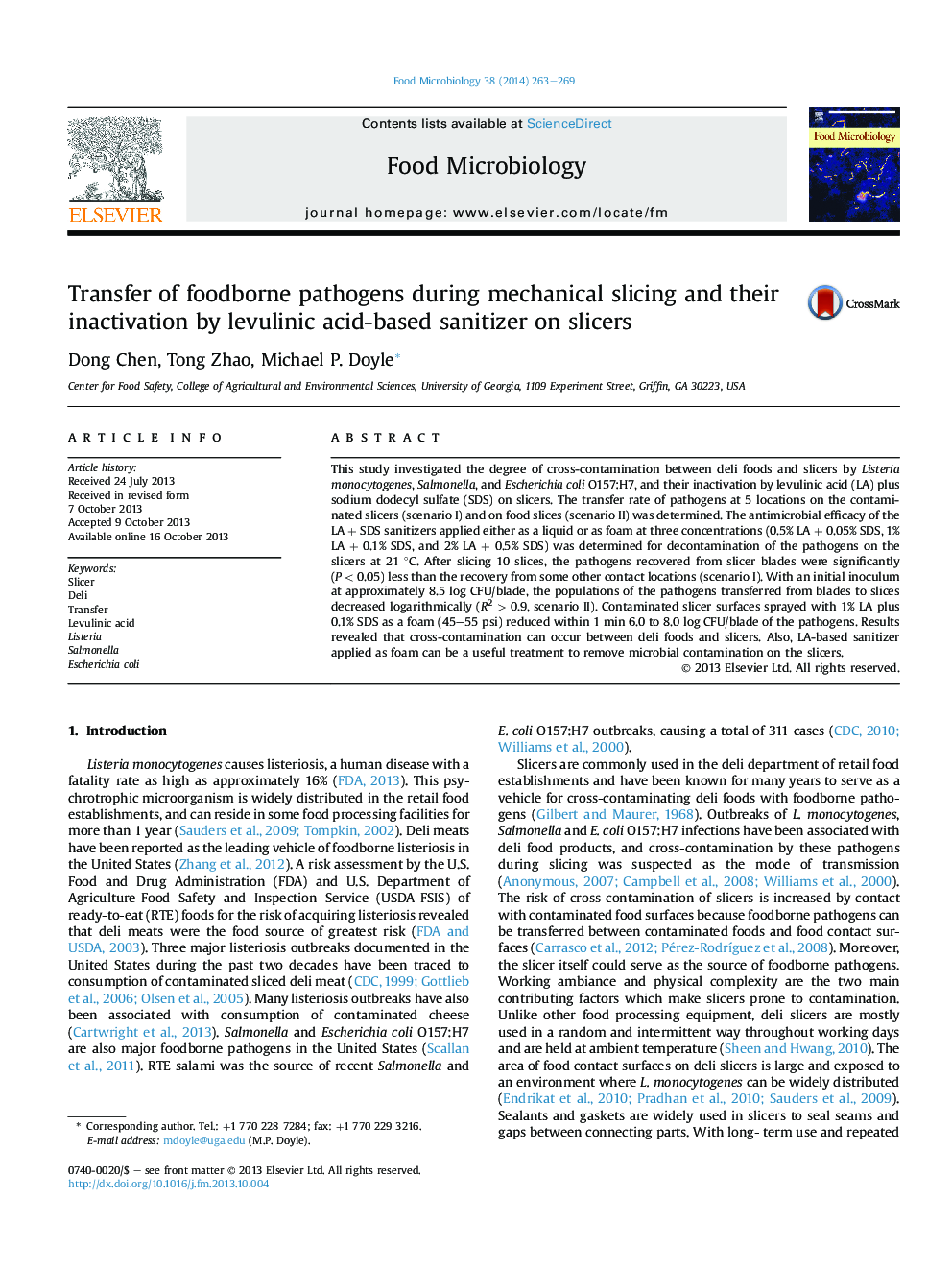| Article ID | Journal | Published Year | Pages | File Type |
|---|---|---|---|---|
| 4362942 | Food Microbiology | 2014 | 7 Pages |
•Two transfer pathways by pathogens between slicers and foods were investigated.•Slicer blades have a low pathogenic transfer rate from foods to slicers.•The populations of the pathogens transferred from blades to slices decreased logarithmically.•Levulinic acid-based sanitizer shows superior antimicrobial activity on slicers.
This study investigated the degree of cross-contamination between deli foods and slicers by Listeria monocytogenes, Salmonella, and Escherichia coli O157:H7, and their inactivation by levulinic acid (LA) plus sodium dodecyl sulfate (SDS) on slicers. The transfer rate of pathogens at 5 locations on the contaminated slicers (scenario I) and on food slices (scenario II) was determined. The antimicrobial efficacy of the LA + SDS sanitizers applied either as a liquid or as foam at three concentrations (0.5% LA + 0.05% SDS, 1% LA + 0.1% SDS, and 2% LA + 0.5% SDS) was determined for decontamination of the pathogens on the slicers at 21 °C. After slicing 10 slices, the pathogens recovered from slicer blades were significantly (P < 0.05) less than the recovery from some other contact locations (scenario I). With an initial inoculum at approximately 8.5 log CFU/blade, the populations of the pathogens transferred from blades to slices decreased logarithmically (R2 > 0.9, scenario II). Contaminated slicer surfaces sprayed with 1% LA plus 0.1% SDS as a foam (45–55 psi) reduced within 1 min 6.0 to 8.0 log CFU/blade of the pathogens. Results revealed that cross-contamination can occur between deli foods and slicers. Also, LA-based sanitizer applied as foam can be a useful treatment to remove microbial contamination on the slicers.
